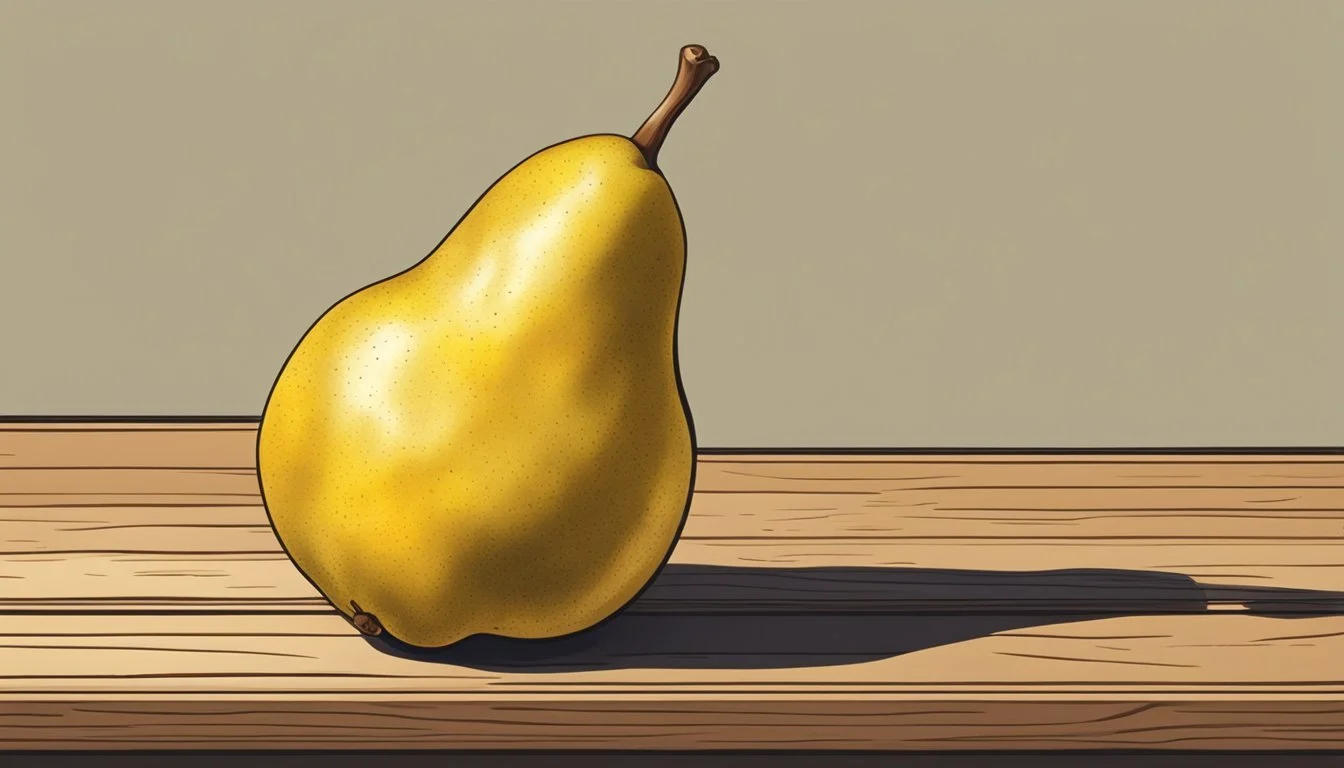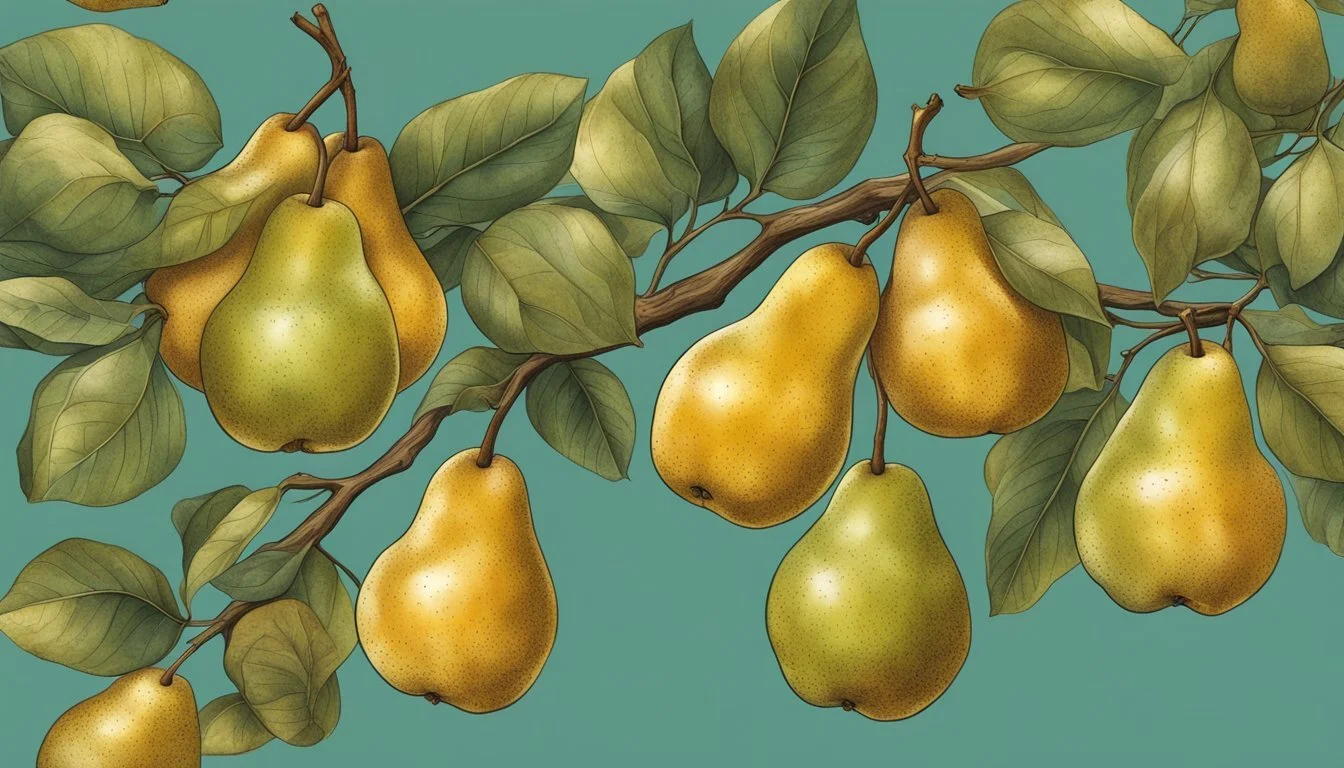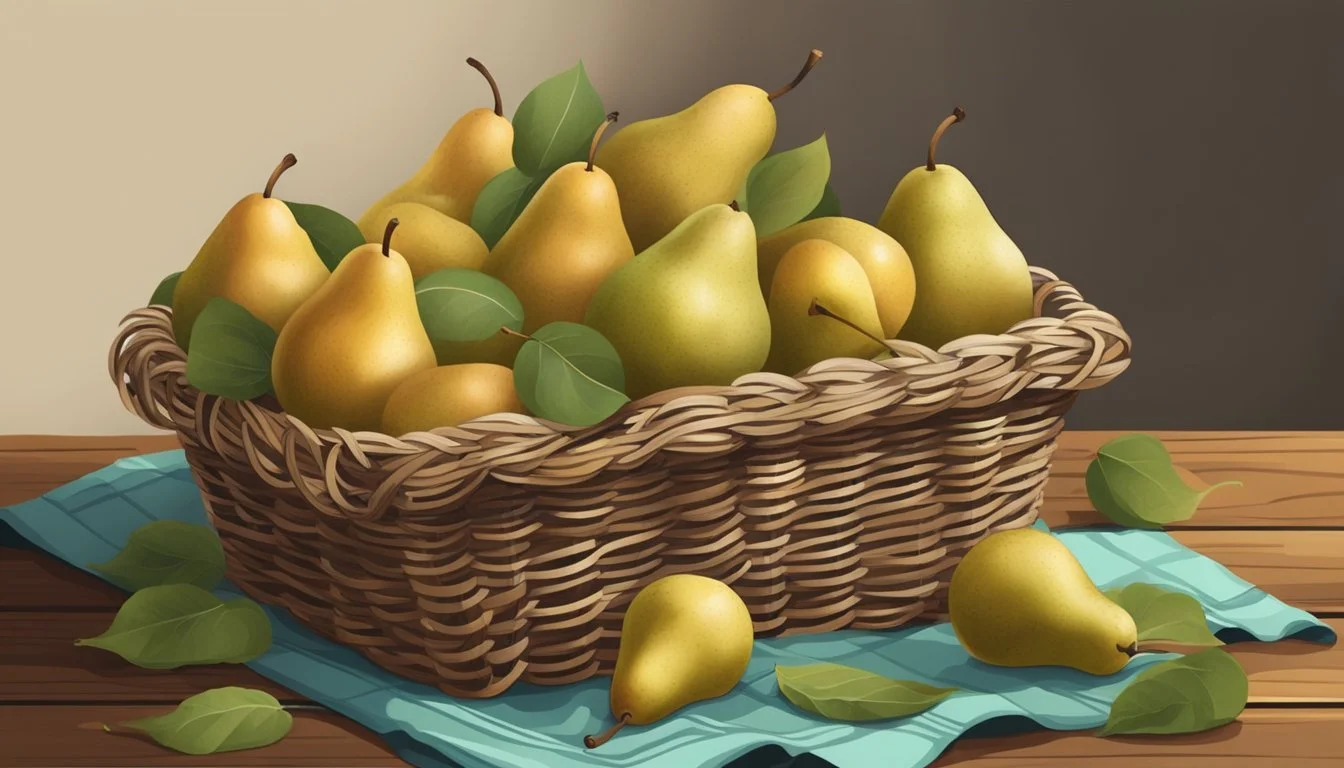How to Tell If Tosca Pears Are Ripe
Signs and Tips for Perfect Fruit Selection
Determining the ripeness of Tosca pears is key to enjoying their full flavor and texture potential, whether they are being eaten fresh or used in recipes. Unlike some fruits that may be more forgiving in their ripeness cues, Tosca pears require a slightly more nuanced approach to determine their readiness for consumption. With a smooth, bright to a pale-green exterior that does not drastically change color as they ripen, Tosca pears depend on tactile and aromatic clues to signal their peak condition.
Ripening off the tree, Tosca pears can be harvested when mature but still firm. This characteristic requires consumers to monitor the fruit during the final stage of ripening to ensure it does not overripen and lose its desired quality. Applying gentle pressure to the neck, or stem end of the pear, provides an accurate measure of ripeness, while other sensory indicators such as a sweet aroma can also assist in pinpointing the perfect time to enjoy the pear. Storing these pears correctly after ripening is crucial to maintaining their flavor and texture, making an understanding of proper storage techniques important for anyone looking to relish this delicious fruit.
Key Takeaways
Ripeness of Tosca pears is gauged by feel and aroma, rather than color.
Tactile tests at the stem end and aroma offer reliable ripeness indicators.
Appropriate storage preserves the quality of ripe Tosca pears.
Understanding Pear Ripeness
When determining the ripeness of Tosca pears, one needs to consider several indicators that signal readiness for consumption. A ripe pear typically exhibits a certain softness at the neck, right near the stem. This region is the best indicator as pears ripen from the inside out.
Color: The color of Tosca pears may change slightly as they ripen, often becoming a lighter green.
Firmness: A simple thumb test can be conducted by gently pressing the pear's neck. If the pear yields slightly to pressure, it indicates ripeness.
Texture: The skin of ripe Tosca pears should remain smooth without any wrinkles or soft spots, which could denote over-ripening.
In the ripening process, Tosca pears emit a sweet aroma, a clear marker of ripe fruit. Sniffing the pear near the stem can often reveal this fragrance.
Indicator Description Neck Softness Gentle pressure yields slightly; indicates fruit is ripe. Color Lighter green shades can emerge. Firmness Pear should not be too hard or mushy. Aroma A ripe pear yields a sweet, aromatic smell.
These factors contribute to assessing the ripeness of Tosca pears. Whether a pear is ripe enough to eat can be discerned through touch, sight, and smell, without relying on complex or less accessible methods.
Checking for Ripeness
Determining the ripeness of Tosca pears involves a combination of tactile, visual, and olfactory evaluations. This guide provides specific tests to ascertain whether a Tosca pear is ready to be enjoyed.
Feel and Pressure Test
One can assess the ripeness of a Tosca pear through a gentle pressure test, particularly around the neck area. The neck should yield slightly to pressure if the pear is ripe. The rest of the fruit may retain a firmer feel, as Tosca pears, similar to other European varieties, ripen from the inside out. To perform the test:
Gently press: Apply light pressure to the pear's neck with your thumb.
Check firmness: The body of the pear should remain mostly firm.
Visual Inspection
While Tosca pears do not drastically change color upon ripening, a ripe pear typically exhibits a slight softening of its green hue. One may also notice subtle changes in the skin. Indicators of ripeness include:
Skin hue: The green color becomes a tad lighter.
Appearance: Look for a smooth, unbruised skin without dark spots.
Aroma and Flavor Test
A ripe Tosca pear emits a sweet, detectable aroma. When conducting an aroma and flavor test, one should:
Smell: Bring the pear close to the nose and inhale; a ripe pear will have a noticeable fruity scent.
Taste: If possible, sample a small piece for a balance of sweetness and slight acidity.
By carefully examining the pressure, appearance, and scent, a person can confidently determine the ripeness level of a Tosca pear.
Ethylene and the Ripening Process
Ethylene is a natural gas that plays a pivotal role in the ripening process of fruits, including Tosca pears. Ethylene triggers a series of biochemical changes within the fruit, transforming it from firm and sour to soft and sweet.
During ripening, pears produce ethylene gas, which acts as a signaling molecule that initiates and regulates their ripening. Not all fruits respond to ethylene in the same manner. With pears, particularly Tosca pears, ethylene enhances the ripening process after they are picked from the tree.
Here's a quick look at the ethylene-related ripening process:
Production: Ethylene is produced naturally by the pear as it begins to ripen.
Response: The pear's cells detect ethylene, which stimulates enzymes that make the fruit softer and sweeter.
Sensitivity: Tosca pears are sensitive to ethylene, which accelerates their ripening when exposed to the gas.
Fruit ripening due to ethylene can be both an advantage and a disadvantage. It is beneficial for ensuring that pears reach optimal ripeness after harvest. However, if stored in close proximity to high-ethylene-producing fruits, like apples or bananas, Tosca pears may ripen quickly and potentially over-ripen.
For those looking to ripen pears at home:
Store pears at room temperature until they begin to soften.
To hasten ripening, place them in a paper bag with an apple or banana to increase ethylene concentration.
Caution: Once ripened, store pears in the refrigerator to slow down the production of ethylene and extend the fruit's edible state.
Varieties of Pears and Their Ripeness
When selecting pears, one should be aware of the specific ripeness indicators for various varieties. The ripeness not only affects taste and texture but also determines the ideal time for consumption.
Bartlett Pear Ripeness
The Bartlett pear typically changes color as it ripens, with a yellow hue indicating readiness. Upon gentle pressure at the neck, if the pear yields slightly, it signifies ripeness. Bartlett pears are unique in that their ripeness is more visually observable compared to other varieties.
Anjou Pear Ripeness
Both green and red Anjou pears do not change color significantly as they ripen. Instead, one assesses ripeness by gentle thumb pressure near the stem; when it gives slightly, it is ripe and ready for eating. Anjous maintain a firm texture even when ripe.
Bosc Pear Ripeness
Bosc pears are firmer and denser and are known for their russeted skin. One should not rely on color change for ripeness; instead, apply light pressure at the neck of the pear. A slight give indicates a ripe pear. Boscs often require more time to ripen after purchase.
Comice Pear Ripeness
Comice pears are typically round and short with a very succulent flesh when ripe. Ripeness is determined by a slight softening at the neck. They are often green and may sometimes exhibit a red blush, but color is not a reliable indicator of ripeness for Comice pears.
Ripening Pears at Home
When Tosca pears are harvested, they're usually firm. They require time to soften and develop their full sweetness. Ripening them at home involves easy methods that can accelerate this process while preventing spoilage.
Using a Paper Bag
To ripen a Tosca pear quickly, one can employ a brown paper bag. The bag traps ethylene gas emitted by the pear, hastening the ripening process. Here's how to manage this method:
Place the pears in the paper bag, optionally adding a ripe banana or apple to amplify the ethylene gas.
Fold the top of the bag to seal it and trap the gas inside.
Check the pears daily by gently pressing the neck for softness.
Room Temperature Ripening
Ripening pears at room temperature is the most straightforward approach. Simply:
Place the pears on a countertop or in a fruit bowl away from direct sunlight.
Turn them occasionally to ensure they ripen evenly.
Test for ripeness daily, as even at room temperature, Tosca pears can ripen unpredictably.
Refrigeration Tips
Once pears reach the desired ripeness, refrigerating them prolongs their shelf life. Keep the following in mind:
Tosca pears should be carefully placed in the fridge to avoid bruising.
Maintain the refrigerator temperature between 35°F to 45°F.
Consume refrigerated pears within a few days for optimal texture and flavor.
Storing Ripe Pears
Storing ripe Tosca pears properly ensures they maintain their quality and flavor. Refrigeration is key for preserving ripe pears. They should be placed in the crisper drawer of a refrigerator to delay overripening. The ideal temperature is between 35 to 40 degrees Fahrenheit (1.6 to 4.4 degrees Celsius). Ripe pears can be kept in the fridge for up to 5 days.
For those who prefer to store pears at room temperature, they should be monitored daily. Room temperature storage is suitable for pears that will be consumed within a day or two. Any longer and the pears may become overripe and mushy.
When storing pears, one should avoid tightly packing them. Pears produce ethylene gas, which speeds up ripening. Ensuring proper air circulation can prevent the pears from becoming overripe prematurely.
Freezing is an option for longer storage:
Wash and peel the pears.
Cut them into preferred sizes, removing the core.
Briefly soak slices in a solution of water and lemon juice (1 quart water to 3 tablespoons lemon juice) to prevent browning.
Arrange the pear pieces on a baking sheet, not touching, and freeze until solid.
Once frozen, transfer to an airtight container or freezer bag.
Frozen pears are best used within 12 months for optimal quality. Note that texture changes occur when thawed, making them best suited for cooked dishes rather than fresh consumption.
How to Store Overripe Pears
When dealing with overripe pears, one's storage strategy should pivot towards preservation and immediate use. Overripe pears often have a mushy consistency and may feel mealy, compromising their fresh-eating quality. Nonetheless, they still hold value for culinary uses.
For short-term storage:
Refrigerate overripe pears in the crisper drawer to slow down the ripening process.
Place them gently to prevent further bruising.
Use within a couple of days.
For medium-term storage:
Puree the pears and freeze the mixture. This method is beneficial for future baking or smoothie recipes.
Ratio: Use 1 tablespoon of lemon juice per cup of puree to preserve color and freshness.
Method: Pureeing
Instructions: Blend overripe pears until smooth.
Method: Preserving
Instructions: Mix in lemon juice.
Method: Storing
Instructions: Pour into airtight containers or ice cube trays.
Method: Freezing
Instructions: Freeze for up to 3 months.
For making the most out of overripe pears:
Consider creating sauces, jams, or compotes. These dishes benefit from the enhanced sweetness and soft texture.
Overripe pears may also be suitable for baking where the texture of the fruit is less critical.
Note: Always inspect overripe pears for spoilage—discard any with off smells or visible mold.
By adhering to these guidelines, overripe pears can continue to be a valuable resource for the culinary enthusiast, reducing food waste while providing a versatile ingredient for a variety of dishes.
Using Ripe Pears in Recipes
When Tosca pears reach their peak ripeness, they not only offer a splendid balance of sweet flavor and buttery texture but also versatility in culinary applications. They can enhance various recipes, from vibrant salads and refreshing smoothies to tender baked goods and savory oatmeal toppings.
Salads and Smoothies
Ripe Tosca pears can transform a simple salad into an extraordinary dish. One should dice or slice them and add to a mixture of greens, perhaps with a sprinkle of cinnamon or a handful of nuts for added texture and flavor. For smoothies, blend them with other fruits and vegetables; they contribute natural sweetness and creaminess.
Recommended Pear Salad:
Arugula or spinach
Sliced ripe Tosca pears
Crumbled feta or goat cheese
Toasted walnuts or pecans
A vinaigrette dressing
Pear Smoothie Tips:
Combine ripe pear, banana, and a handful of spinach.
Use almond milk or yogurt for a creamy consistency.
Add a dash of cinnamon to enhance the sweet pear flavor.
Baking with Pears
In baking, Tosca pears can be the star of the dish. They work well in pies, tarts, and crumbles, providing moisture and a deep, caramelized flavor when cooked. Ensure to remove any bruised spots before use, but overall, the slight softness of ripe pears is excellent for baking recipes.
Baking Ideas:
Pear and cinnamon oatmeal crumble
Pear pie with a flaky, buttery crust
Pear muffins with a hint of vanilla
Raw Pear Consumption
Consuming Tosca pears raw makes the most of their delicate flavor and juicy texture. One can serve them sliced with a cheese platter, chop them into an oatmeal topping, or simply eat them as a hand fruit. The subtle sweetness pairs beautifully with stronger flavors like cheese or cinnamon-infused dishes.
Ideas for Raw Pear Use:
Sliced pears with assorted cheeses
Diced pears stirred into oatmeal or yogurt
Pear slices drizzled with honey as a snack
Nutritional Benefits of Pears
Pears serve as a nutritious fruit choice, offering a range of health benefits due to their rich content of vitamins, minerals, and dietary fiber. Fiber is particularly abundant in pears, promoting digestive health and aiding in the maintenance of a healthy weight. For those monitoring their intake, pears are also a source of natural sugars, providing a sweet taste without the need for added sugars.
A medium-sized pear typically contains the following:
Calories: Approximately 100
Fiber: 5.5 grams
Sugars: 14 grams
Essential Nutrients
Pears offer several essential nutrients that contribute to overall health:
Vitamin C: Important for immune function and skin health.
Vitamin K: Essential for blood clotting and bone health.
Potassium: Helps to regulate blood pressure.
Antioxidant Properties
Pears contain various antioxidants, including vitamin C and polyphenols. The role of antioxidants is to combat oxidative stress and reduce the risk of chronic diseases.
Dietary Fiber
One pear provides about 21% of the daily recommended fiber intake. The fiber in pears is:
Soluble Fiber: May lower blood cholesterol and improve blood sugar levels.
Insoluble Fiber: Helps to move food through the digestive system and maintain bowel health.
In summary, pears provide key nutrients without adding significant fat or calories to one's diet. The natural sugars found in pears make them a healthy option for satisfying a sweet tooth, while the high fiber content supports a range of nutritional benefits, from gut health to blood sugar management.
Frequently Asked Questions
How can one test a Tosca pear for ripeness?
One can perform the "neck test" by gently pressing the neck, or stem end, of the pear. If the flesh yields slightly, the pear is ripe.
What visual clues indicate a Tosca pear is ripe?
A ripe Tosca pear may exhibit a slight change in color depending on the variety. They should also lack bruises or blemishes.
Is there a scent associated with ripe Tosca pears?
Yes, a ripe Tosca pear often emits a sweet fragrance near the stem. Absence of aroma could suggest the pear is not fully ripe.
Can the firmness of the pear’s body indicate ripeness?
Ripe Tosca pears typically have a slightly soft body. If the main body of the pear feels very soft, it might be overripe.
Is there a way to ripen Tosca pears faster?
Tosca pears can be ripened by placing them in a paper bag with bananas or apples, which emit ethylene gas, known to speed up the ripening process.
Note: Tosca pears ripen from the inside out; therefore, checking the neck for softness provides the most accurate indication of ripeness.






